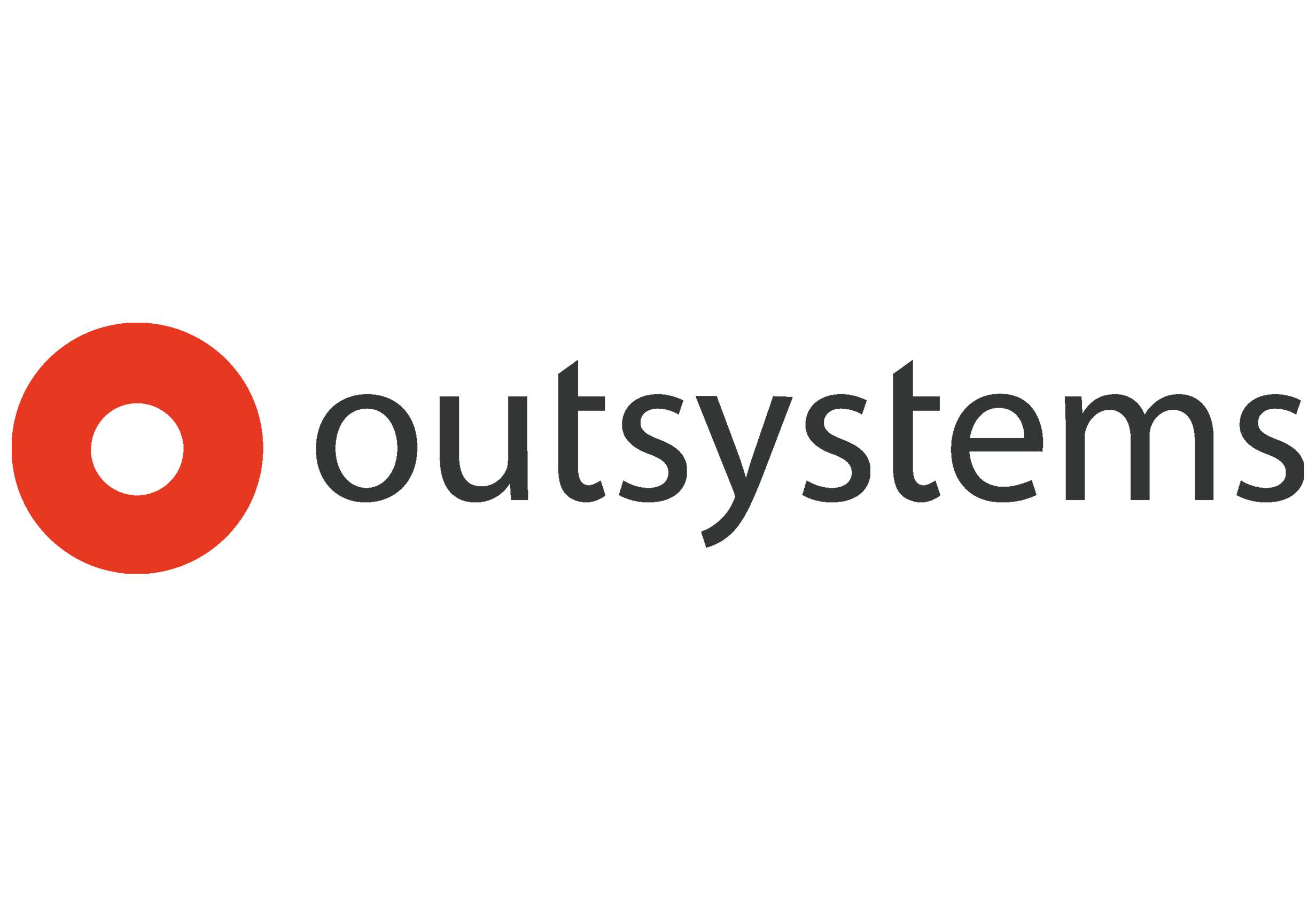
Article by Akarat Ngandee, Country Manager – Thailand and Vietnam, OutSystems
In today’s fast paced environment, across industries, organizations are constantly looking at ways to improve their transformation initiatives as well as stay agile and relevant to meet customers’ expectations. The changing market conditions have forced enterprises to seek new opportunities and reevaluate business and operating models. Enterprises increasingly rely on their investments in technology to address these changing business imperatives and to deliver smart solutions that offer lasting agility.
Digital innovation has always been a key to staying relevant and ahead of the pack and enterprise developers are pushed to the brink, straining resources and time constraints. They are overwhelmed with the demand for digitisation and under pressure to realise concepts faster than ever before without compromising on quality, all while keeping a keen eye on the overall cost. It can be a tricky balancing act.
Confronting problems
The latest infobrief by IDC stated that by 2024, 75 percent of the G2000 firms will be high-performance, large-scale producers of software-powered innovation. This is fueled by new market realities, increasingly demanding customers, and the ever-present threat of digital disruption, extending beyond speeding software development cycles. Now, software needs to deliver lasting business value.
In Southeast Asia, organizations still struggle to adopt agile DevOps processes and practices across the software development life cycle, as the study identified that security and development integration is the biggest challenge for 58% of organizations. In Singapore and Indonesia, where efforts are more advanced, the emphasis is on fine tuning DevOps teams and securing those processes.
Enterprises face a whole new set of challenges – they need to adapt to market changes on a dime and, need to rapidly hire and train employees and they need to modernize legacy systems to remain competitive. For most companies, we understand that mission-critical legacy systems are not going anywhere and it is imperative for companies to build their innovative applications around and on top of legacy systems. In addition to the pressures brought on by the inability to keep pace, customers have been demanding more highly personalised products and services, creating additional pressures on organizations to rapidly extend and adapt their existing systems in ways they were never built to do.
Cracking the code
This then calls for a need to employ visual, model-based development platforms to survive and thrive in the current landscape. Organizations all over the world are increasingly relying on low-code development tools. We see 47% of APAC enterprise leaders rely on various model-driven development tools, with 39% of them relying on visually guided development tools and 29% of them planning to adopt low-code tools.
These platforms give organizations a way to design and develop software applications quickly, with minimal hand-coding. Using visual modelling in a graphical interface to assemble and configure applications enables developers to build new applications in an order of magnitude more quickly, while boosting scalability, consistency, security, and most importantly, agility – these new approaches help developers solve their organizations’ challenges with unprecedented speed, while empowering non-developers to create prototypes and collaborate with IT to build complex software.
Visual development platforms also create bridges between legacy and modern applications, or in some instances replacing legacy systems entirely. Because these platforms use intuitive drag-and-drop mechanisms, it also provides a more simple development process, which enables end-users to be more involved in the design and development of the applications that they will be relying upon.
Going the distance
When asked about their reasons for adopting low-code and other visually guided tools, 46% of organizations shared that these tools are the future, with 43% agreeing that it simplifies the developer experience and 42% believe that tools make for a more intuitive developer experience. However, low-code, by itself is not enough to make an organization truly agile. Organizations require a platform that speeds every step of the Dev-Sec-Ops process – from design, development, architectural analysis, testing, deployment to monitoring. Even then, the platform needs to be optimized so that once an application has been deployed, it is easy for rapid modifications to take place – whether those changes are being driven by strategy changes, government regulations, economic shift or by something as dramatic as a global pandemic.
Looking at 2022 and beyond, 52% of organizations in Southeast Asia believe that cloud-native application development will be the overriding focus and to ensure agility is embedded, organizations need to understand:
- Security is the watchword: As development cycles continue to shorten, enterprises should take care to integrate security into planning phases if they want to proceed apace and stay ahead of change
- Innovation first: Innovative customer experiences fuel the creation of new markets and new audiences. The incorporation of customer feedback will also new ideas on new platforms
- Plan for hiring crunch: start recruitment planning early, build apps for upskilling and continuous education, and ensure that developers work closely with IT to address development shortfalls.
An example of an organization that has successfully done that is Schneider Electric, a European multinational company providing energy and automation digital solutions for efficiency and sustainability. To continue innovating for customers, Schneider needed to boost agility and efficiency in its business processes, capabilities, and operations, this include developing, deploying, and managing.
By deploying OutSystems low-code platform, Schneider Electric transformed its IT landscape by setting up a “Low-Code Digital Factory”, which doubled its development speed, producing more than 60 new apps in about 40% of the time than previously would have been needed.
The time to Innovate is now
2020 has indeed brought in a shift in the way enterprises and tech leaders are reviewing their state of digital transformation. It is clear that in three to five years, every enterprise is going to have to be a digital innovation factory just to compete. Whether the objective is to modernize older systems, streamline processes, or respond to new market conditions by bringing new services to market faster, visual development platforms are definitely an enabler for organizations looking to become more agile.

บทความโดย เอกรัฐ งานดี ผู้จัดการประจำประเทศไทยและเวียดนาม เอาท์ซิสเต็มส์
สภาพแวดล้อมทางธุรกิจในปัจจุบันมีการเปลี่ยนแปลงอย่างรวดเร็วไม่ว่าจะเป็นกลุ่มอุตสาหกรรมใดก็ตาม ทำให้องค์กรทุกแห่งต้องแสวงหาวิธีการที่จะใช้ในการสร้างการเปลี่ยนแปลงได้อย่างมีประสิทธิภาพ เพิ่มความคล่องตัวและตอบโจทย์ความต้องการของลูกค้าอย่างลงตัว สภาพตลาดที่เปลี่ยนไปทำให้องค์กรเหล่านี้ต้องมองหาโอกาสใหม่ ๆ และประเมินรูปแบบทางธุรกิจและรูปแบบการทำงานเสียใหม่ องค์กรหลายแห่งหันมาลงทุนด้านเทคโนโลยีมากขึ้น เพื่อรองรับความต้องการทางธุรกิจที่เปลี่ยนไป และนำโซลูชั่นอัจฉริยะต่าง ๆ มาใช้เพิ่มความคล่องตัวในระยะยาวให้กับธุรกิจมากขึ้น
นวัตกรรมดิจิทัล คือกุญแจสำคัญที่จะช่วยให้องค์กรธุรกิจก้าวทันกระแสความเปลี่ยนแปลงและก้าวล้ำนำหน้าเหนือคู่แข่ง ด้วยเหตุนี้ นักพัฒนาแอปพลิเคชั่นขององค์กรจึงต้องทุ่มเททำงานอย่างสุดกำลังด้วยทรัพยากรและเวลาที่มีอยู่อย่างจำกัด เพื่อตอบสนองความต้องการในการปรับเปลี่ยนการดำเนินงานสู่ดิจิทัล ทั้งยังต้องทำงานให้สำเร็จลุล่วงให้ได้อย่างรวดเร็วภายในกรอบเวลาที่สั้นกว่าเดิม โดยยังรักษาคุณภาพและต้องควบคุมค่าใช้จ่ายโดยรวมไม่ให้สูงเกินงบที่ตั้งไว้ ซึ่งทั้งหมดนี้นับเป็นเรื่องที่ยุ่งยากอย่างมากเลยทีเดียว
เผชิญปัญหารอบด้าน
รายงาน Infobrief ฉบับล่าสุดของไอดีซี (IDC) ระบุว่า ภายในปีพ.ศ. 2567 บริษัทในกลุ่ม G2000 จะเป็นผู้ผลิตนวัตกรรมที่ขับเคลื่อนด้วยซอฟต์แวร์ขนาดใหญ่ที่มีประสิทธิภาพสูง สิ่งนี้ได้รับแรงหนุนจากความเป็นจริงใหม่ ๆ ของตลาด ความต้องการของลูกค้าที่เพิ่มมากขึ้นและความท้าทายจากดิจิทัล ดิสรัปชั่น ซึ่งมีความหมายมากกว่าการเร่งวงจรการพัฒนาซอฟต์แวร์เท่านั้น แต่ซอฟต์แวร์ยังจำเป็นต้องนำเสนอคุณค่าทางธุรกิจที่ยั่งยืนได้อีกด้วย
องค์กรในเอเชียตะวันออกเฉียงใต้ยังคงติดขัดในการนำกระบวนการและแนวทางการทำงานของ DevOps ที่มีความคล่องตัวจากการทำงานร่วมกันของนักพัฒนาซอฟต์แวร์และฝ่ายปฏิบัติงานมาใช้ในวงจรการพัฒนาซอฟต์แวร์ ดังจะเห็นได้จาก 58% ขององค์กรที่ตอบแบบสอบถามระบุว่าความปลอดภัยและการบูรณาการการพัฒนาซอฟต์แวร์เข้าด้วยกันเป็นความท้าทายที่ใหญ่ที่สุด
องค์กรต่าง ๆ ต้องเผชิญกับปัญหาท้าทายใหม่ ๆ โดยจะต้องปรับตัวอย่างฉับไวตามสภาพตลาดที่เปลี่ยนไป ทั้งยังต้องว่าจ้างและฝึกอบรมพนักงานอย่างรวดเร็ว และปรับปรุงระบบให้ทันสมัยเพื่อรักษาขีดความสามารถด้านการแข่งขัน สำหรับบริษัทส่วนใหญ่แล้ว ระบบรุ่นเก่าที่มีความสำคัญต่อการดำเนินงานจะยังคงถูกใช้งานต่อไป โดยบริษัทเหล่านี้จะต้องสร้างแอปพลิเคชั่นใหม่ ๆ ที่ทำงานหรือรันอยู่บนระบบรุ่นเก่าที่ว่านี้ นอกเหนือไปจากความกดดันที่เกิดขึ้นจากความจำเป็นที่จะต้องก้าวให้ทันกับความเปลี่ยนแปลงแล้ว ในส่วนของลูกค้ายังมีความต้องการเพิ่มมากขึ้นสำหรับสินค้าและบริการที่มีความเฉพาะเจาะจงมากขึ้น (Personalised) ส่งผลให้องค์กรจำเป็นต้องขยายและปรับเปลี่ยนระบบที่มีอยู่ภายในเวลาอันรวดเร็วในรูปแบบที่ไม่เคยมีมาก่อน
ฉีกกฎเกณฑ์แบบเดิมๆ
ด้วยเหตุนี้ องค์กรจึงจำเป็นที่ต้องใช้แพลตฟอร์ม visual development และ model-based เพื่อให้สามารถอยู่รอดและประสบความสำเร็จท่ามกลางสภาพแวดล้อมทางธุรกิจในปัจจุบัน องค์กรต่าง ๆ ทั่วโลกหันมาใช้เครื่องมือสำหรับการพัฒนาแบบ low-code กันมากขึ้น และจากการสำรวจพบว่า 47% ของผู้บริหารองค์กรเอเชียแปซิฟิกพึ่งพาเครื่องมือพัฒนาแบบที่ใช้โมเดลหลากหลายชนิด โดย 39% ใช้เครื่องมือที่เป็น visual development และ 29% มีแผนที่จะปรับใช้เครื่องมือแบบ low-code
แพลตฟอร์มเหล่านี้ช่วยให้องค์กรสามารถออกแบบและพัฒนาแอปพลิเคชั่นซอฟต์แวร์ได้อย่างรวดเร็วโดยมีการเข้ารหัสแบบ hand-coding เพียงเล็กน้อย การใช้การสร้างแบบจำลองภาพในอินเทอร์เฟซแบบกราฟิกเพื่อประกอบและกำหนดค่าแอปพลิเคชั่นช่วยให้นักพัฒนาสามารถสร้างแอปพลิเคชั่นใหม่ตามลำดับขนาดได้เร็วขึ้น ในขณะเดียวกันก็เพิ่มความสามารถในการปรับขนาดความสม่ำเสมอความปลอดภัยและที่สำคัญที่สุดคือความคล่องตัว – แนวทางใหม่เหล่านี้ช่วยให้นักพัฒนาสามารถแก้ปัญหาความท้าทายขององค์กรได้ด้วยความเร็วที่ไม่เคยมีมาก่อนในขณะเดียวกันก็ช่วยให้ผู้ที่ไม่ใช่นักพัฒนาสามารถสร้างต้นแบบและร่วมมือกับไอทีเพื่อสร้างซอฟต์แวร์ที่ซับซ้อน
แพลตฟอร์ม visual development ต่าง ๆ ยังเป็นตัวสร้างสะพานเชื่อมระหว่างแอปพลิเคชั่นเดิมและแอปพลิเคชั่นสมัยใหม่ หรือในบางกรณีจะแทนที่ระบบเดิมทั้งหมด เนื่องจากแพลตฟอร์มเหล่านี้ใช้กลไกการลากและวางที่ใช้งานง่ายจึงมีขั้นตอนการพัฒนาที่ง่ายขึ้นซึ่งช่วยให้ผู้ใช้ปลายทางมีส่วนร่วมในการออกแบบและพัฒนาแอปพลิเคชั่นที่พวกเขาจะใช้มากขึ้น
เดินหน้าเต็มกำลัง
เมื่อถูกถามถึงเหตุผลในการปรับใช้เครื่องมือแบบ low-code และเครื่องมือแบบ visual อื่น ๆ 46% ขององค์กรบอกว่าเครื่องมือเหล่านี้คืออนาคต โดย 43% ยอมรับว่าเครื่องมือดังกล่าวช่วยลดความซับซ้อนของประสบการณ์ของนักพัฒนาซอฟต์แวร์ และ 42% เชื่อว่าเครื่องมือที่ว่านี้รองรับการใช้งานหลากหลายและสะดวกง่ายดายสำหรับนักพัฒนา อย่างไรก็ดี ลำพังเพียงแค่การใช้เครื่องมือแบบ low-code ยังไม่เพียงพอที่จะทำให้องค์กรมีความคล่องตัวอย่างแท้จริง องค์กรต่าง ๆ จำเป็นต้องใช้แพลตฟอร์มที่เพิ่มความรวดเร็วให้กับทุกขั้นตอนของกระบวนการ Dev-Sec-Ops ตั้งแต่ขั้นตอนการออกแบบ พัฒนา วิเคราะห์สถาปัตยกรรม ทดสอบ ติดตั้งใช้งาน ไปจนถึงขั้นตอนการตรวจสอบติดตามผล และแม้กระทั่งหลังจากนั้นก็ยังจำเป็นต้องปรับแต่งแพลตฟอร์ม เพื่อที่ว่าหลังจากที่ติดตั้งแอปพลิเคชั่นแล้ว ก็จะสามารถทำการปรับเปลี่ยนได้อย่างง่ายดายและรวดเร็ว ไม่ว่าการปรับเปลี่ยนที่ว่านี้จะเป็นผลมาจากการเปลี่ยนแปลงกลยุทธ์ กฎระเบียบของภาครัฐ สภาพเศรษฐกิจที่เปลี่ยนไป หรือวิกฤตการณ์อย่างเช่นกรณีการแพร่ระบาดที่เกิดขึ้นทั่วโลก
เมื่อมองไปที่ปี 2565 เป็นต้นไป 52% ขององค์กรในเอเชียตะวันออกเฉียงใต้เชื่อว่าการพัฒนาแอปพลิเคชั่นแบบคลาวด์เนทีฟ (cloud-native) จะกลายเป็นสิ่งสำคัญ และเพื่อให้เกิดความคล่องตัวอย่างแท้จริง องค์กรต่าง ๆ จำเป็นที่จะต้องเข้าใจว่า:
- ความปลอดภัยถือเป็นเรื่องสำคัญ: ในขณะที่วงจรการพัฒนาสั้นลงเรื่อย ๆ องค์กรต่าง ๆ จึงต้อง
บูรณาการระบบรักษาความปลอดภัยเข้ากับขั้นตอนการวางแผน เพื่อให้สามารถดำเนินการได้อย่างรวดเร็วต่อเนื่องและก้าวนำหน้าการเปลี่ยนแปลง
- นวัตกรรมต้องมาก่อน: ประสบการณ์ที่แปลกใหม่สำหรับลูกค้าจะช่วยผลักดันการสร้างตลาดและการเข้าถึงกลุ่มลูกค้าเป้าหมายใหม่ ๆ นอกจากนี้ จะต้องรับฟังความคิดเห็นของลูกค้าและนำเอามาใช้เป็นข้อมูลในการคิดค้นไอเดียบนแพลตฟอร์มใหม่ ๆ
- วางแผนสำหรับการว่าจ้างบุคลากร: เริ่มต้นวางแผนเรื่องการสรรหาบุคลากรแต่เนิ่น ๆ สร้างแอปที่จะช่วยเพิ่มพูนทักษะและส่งเสริมการเรียนรู้อย่างต่อเนื่อง และเปิดโอกาสให้นักพัฒนาได้ทำงานร่วมกับฝ่ายไอทีอย่างใกล้ชิดเพื่อแก้ไขปัญหาที่เกี่ยวกับการพัฒนา
ตัวอย่างขององค์กรที่ประสบความสำเร็จในเรื่องนี้ก็คือ Schneider Electric บริษัทข้ามชาติของยุโรปที่นำเสนอดิจิทัลโซลูชั่นด้านพลังงานและระบบอัตโนมัติสำหรับการปรับปรุงประสิทธิภาพและการพัฒนาที่ยั่งยืน เพื่อรองรับการสร้างสรรค์นวัตกรรมสำหรับลูกค้าอย่างต่อเนื่อง Schneider จำเป็นที่จะต้องเพิ่มความคล่องตัวและประสิทธิภาพให้กับกระบวนการทางธุรกิจ รวมทั้งปรับปรุงขีดความสามารถและการดำเนินงาน ทั้งในส่วนของการพัฒนา การปรับใช้เทคโนโลยี และการบริหารจัดการ
การติดตั้งใช้งานแพลตฟอร์ม low-code ของเอาท์ซิสเต็มส์ (OutSystems) ช่วยให้ Schneider Electric ปรับเปลี่ยนสภาพแวดล้อมไอที ด้วยการจัดตั้ง “Low-Code Digital Factory” เพิ่มความรวดเร็วในการพัฒนาแอปพลิเคชั่นได้ถึง 2 เท่า สามารถผลิตแอปใหม่ ๆ ได้มากกว่า 60 แอป โดยใช้เวลาเพียง 40% ของระยะเวลาที่เคยใช้ก่อนหน้านี้
ถึงเวลาแล้วสำหรับการสร้างสรรค์นวัตกรรม
ปี 2563 นับเป็นจุดเปลี่ยนสำคัญที่องค์กรต่าง ๆ และผู้บริหารฝ่ายเทคโนโลยีควรจะตรวจสอบทบทวนสถานะของการทำดิจิทัลทรานส์ฟอร์เมชั่น (Digital Transformation) แน่นอนว่าในอีก 3-5 ปีข้างหน้า ทุกองค์กรจะต้องปรับเปลี่ยนไปสู่การเป็นโรงงานผลิตนวัตกรรมดิจิทัลเพื่อให้แข่งขันได้ ไม่ว่าองค์กรจะต้องการปรับปรุงระบบรุ่นเก่าให้ทันสมัย เพิ่มความคล่องตัวให้กับกระบวนการต่าง ๆ หรือตอบสนองต่อสภาวะตลาดที่เปลี่ยนไปด้วยการนำเสนอบริการใหม่ ๆ ออกสู่ตลาดให้รวดเร็วกว่าเดิม แพลตฟอร์ม visual development คือเครื่องมือสำคัญที่จะช่วยให้องค์กรเพิ่มความคล่องตัวในการดำเนินงานได้อย่างเป็นรูปธรรม

